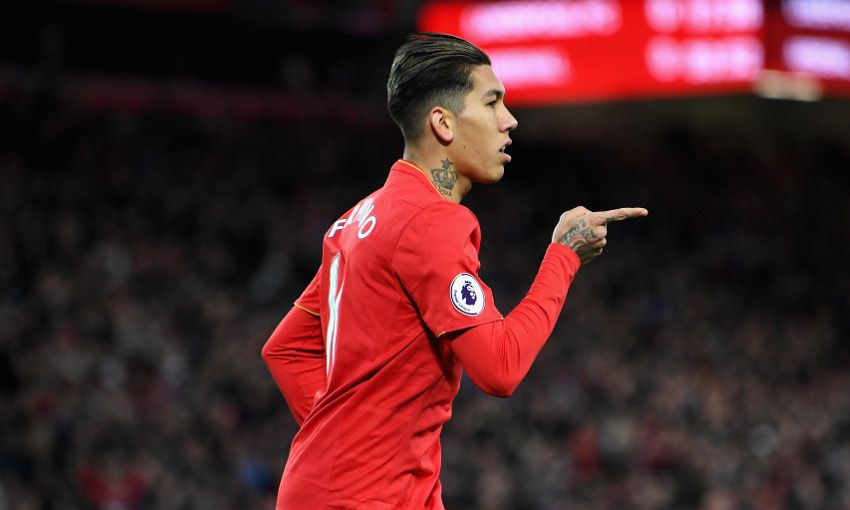In a pleasing but head-scratching result, Liverpool once again triumphed over a top four rival with a convincing 3-1 win over Arsenal. It was the latest in a trend that is now far too prevalent to ignore: Klopp’s men can beat the big sides with relative ease, but struggle horribly against weaker opposition. The win came less than a week after a woeful showing against Leicester, and the results against Burnley, Swansea and other such teams remain fresh in the memory. Many have accused the side of lacking the right mentality – this does not seem right. A mentality issue may explain a few more off-days than one might like against smaller teams, but it doesn’t satisfactorily account for a systematic failure to break down teams from the bottom half of the table. Something else is definitely at play here; it is a tactical issue, and it needs to be resolved rapidly for Liverpool to reach their goal of top four this season.

Source: liverpoolfc.com
The issue is Liverpool’s inability to break down the low block. The weakness was not regularly exposed during the first half of the season – it had not yet become apparent that the team struggled so much against deep lines, so opposition such as Watford came (laudably) to play an attacking game and got comprehensively overturned. This period of grace inevitably came to an end, however: opposing managers started to realise that sitting deep and springing counter attacks often yielded results against Liverpool. Of course, the vulnerability to counter-attacks would be partially alleviated by improving the defence: this is a personnel issue, however, and it gains little to point out such flaws when Klopp must work with what he has until the summer. What can possibly be dealt with is the consistent failure to create good chances against sides that sit deep. First, it is worth discussing why the low block causes Liverpool more problems than other big teams. Essentially, it flies directly in the face of the kind of football Klopp likes to get his side playing – it couldn’t exactly be characterised as counter-attacking, but certainly the element of suddenly breaking with pace to get in behind the line is a prevalent feature. The combination of runners from deep such as Lallana and Wijnaldum, the pace of Mane in a fluid front three and the accuracy of Coutinho and others in picking out the runs creates a team perfectly suited for exploiting gaps. Against the bigger teams, this works well. The excellent Leroy (@LFCImpulse) has made a video from the Arsenal game demonstrating how excellent off-the-ball movement leads to creation of space, which is then lethally exploited. This can be seen here: https://twitter.com/LFCImpulse/status/838728516539572224.
However, against sides determined to sit deep, all of this off-the-ball movement takes place in front of a solid bank of defenders. Thus nobody gets drawn out of their defensive position, and any space that is created is in an area which does not carry much danger for the opposition. At this point, Liverpool generally draw a blank. Occasionally Coutinho will bail the side out with a trademark long-distance strike, but these can hardly be relied upon as a consistent solution. What generally happens is a recycling of the ball out wide, where James Milner or Nathaniel Clyne will receive it. They are left in space deliberately, as they are unable to create chances with any regularity. Milner is playing on the wrong side, so tends to have to cut back inside; by the time he has done this, someone has generally been able to get out to him. Clyne lacks composure in the final third, and in general contributes little to nothing going forward. In any case, a wide threat will generally only be potent when there is a target man to aim at – Liverpool have no such player, so shifting the ball out wide is not really a viable solution for breaking down the low block. Quite the opposite: almost everyone else, sometimes including the centre-backs, come through the middle in support but find that it does not make a perceptible different to the threat level posed. Instead, gaps are left: this allows opposition to pick their moments and catch Klopp’s men on the counter.
The solution is two-fold. Firstly, and straightforwardly, a more direct style must be adopted. This does not mean direct in the sense of long balls, but rather assertive runs with the ball that force the opposition to close down in numbers. Even if the take-on fails, the run creates some much-needed space for others: if the runner can offload the ball before getting tackled, there is a genuine prospect of getting in behind the deep line. This would just require a simple instruction from Klopp: stop looking out wide so often, take a risk and take on the defenders. It is not as though there is an absence of technically gifted players in the Liverpool attack. Secondly, and perhaps more radically, is a switch to three at the back: specifically, a 3-5-2. Mane and perhaps Moreno would function in the wider roles – while this would be questionable defensively against a bigger side, it makes no material difference against the low block. The only threat comes on the counter, and currently when this happens Clyne and Milner are high up the pitch anyway. As such, it makes sense to have more attack-minded, direct players in the wider roles. This would mean that recycling out wide would not be an almost automatic waste of possession – Mane in particular has a tendency to cut inside and run at the defence, creating the possibility of space for others.
Naturally, such changes come with plenty of risks and no guarantees. However, the current form against bottom-half sides is so woeful that it surely has to be worth trying. Even if Klopp is reluctant to make a change to the formation, the reduction in balls out wide in favour of more on-the-ball runs should increase the chances of getting in behind and creating clear-cut chances. The ability to seamlessly ease pass our main rivals is a more than solid building block to be starting from – if the tweaks can just be made to fix the form against the lesser outfits, Liverpool will be title contenders again in no time.
James Martin
Latest posts by James Martin (see all)
- A Pressing Concern - February 8, 2021
- Manchester City 1-1 Liverpool: Did Klopp’s formation gamble pay off? - November 10, 2020
- The big Premier League preview Part Two – The bottom half - September 10, 2020
